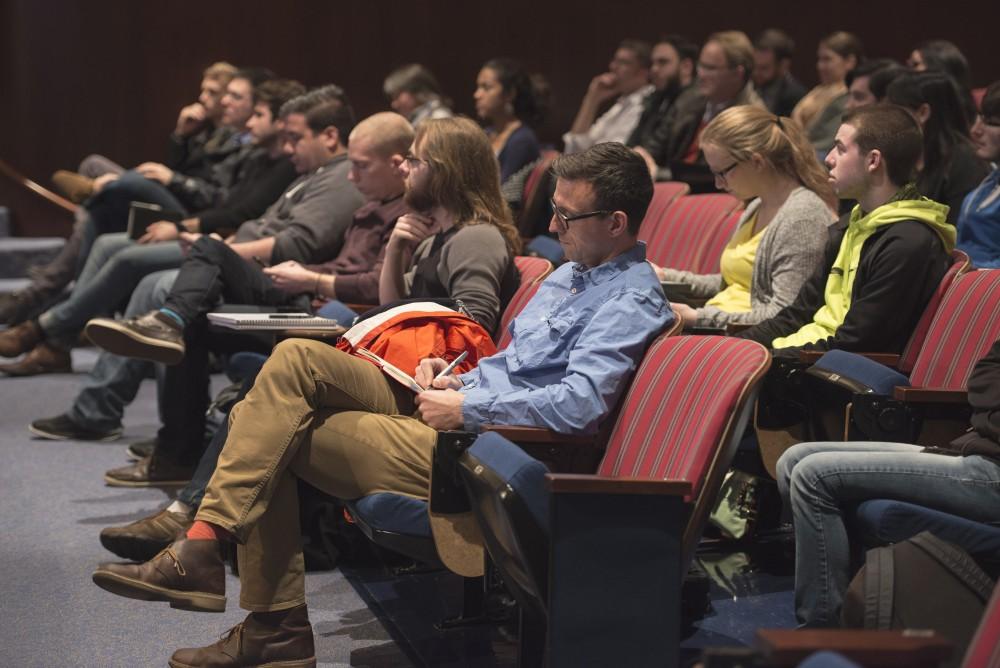Marty Moore talks design thinking at GVSU

GVL / Luke Holmes – Students took notes as Marty Moore presented. The presentation was held at the Pew Campus on Thursday, Mar. 24, 2016.
Mar 28, 2016
Students, faculty, staff and members of the Grand Rapids community filled the seats and lined the walkways of the Loosemore Auditorium on March 24 to hear Marty Moore talk about design thinking.
Moore is a design manager and lead product designer at Google. His talk is the seventh in the Design Thinking Initiative series put on by GVSU. He focused on Google design and about a new process of design thinking called design sprints.
Moore explained the design process goes through a series of six steps: understand, define, diverge, decide, prototype and validate. That process used to happen anywhere in a six-month to a year-long period. However, design sprints shorten that process to only five days.
“At Google, we largely use (design sprints) for creating the experience for the new app or product,” he said. “You can also take an existing product and try to figure out where we want it to go.”
Design sprints were created to help create empathy for users and to provide great user experience and to create a deep understanding into the problems users were having. There is a team made up of five to eight people all with very diverse backgrounds to bring in different perspectives and insights. Then, a sprint master coordinates and leads the sprint.
Packing the process into five days might seem counterproductive, but it has actually helped generate high-quality ideas in a shorter period of time.
“An intentional side effect of this is helping teams fail fast,” Moore said. “One of the big problems in design thinking is knowing if you’re hitting the right target. It’s not just about being creative and making sure you have the right process, it’s also making sure you’ve got something good.”
With design sprints, if the product or the idea fails, the team will know in five days, instead of putting in a lot of hard work for six months only for something to fail.
“Sprints sum up what I think about as design thinking,” Moore said. “It’s really a process to help you be creative in a really structured way. So it takes out the barriers that you usually have — meetings, distractions, a lot of projects you are juggling and it focuses it down to one week and it’s super effective.”
Moore noted that while sprints are “ultra-exhausting,” they are also a lot of fun and are a great way to generate ideas.
Jonathan Cook, a GVSU student who interned at Google last semester, joined Moore on stage to talk about his experience at Google.
“Everyone in the office was proactive in helping the interns get up to speed with the work they were doing,” he said. “It’s a culture where everyone wants to solve problems, and instead of just going out to solve problems first, they are actually looking at each other. Strong foundation really helps build a momentum to move outwards with new products.”
Google is always looking for people with diverse backgrounds who have passion and the willingness to help others, Moore said. “Google has a top-level embrace for design thinking.”
Visit www.developers.google.com/design-sprint for more information on design sprints.






















